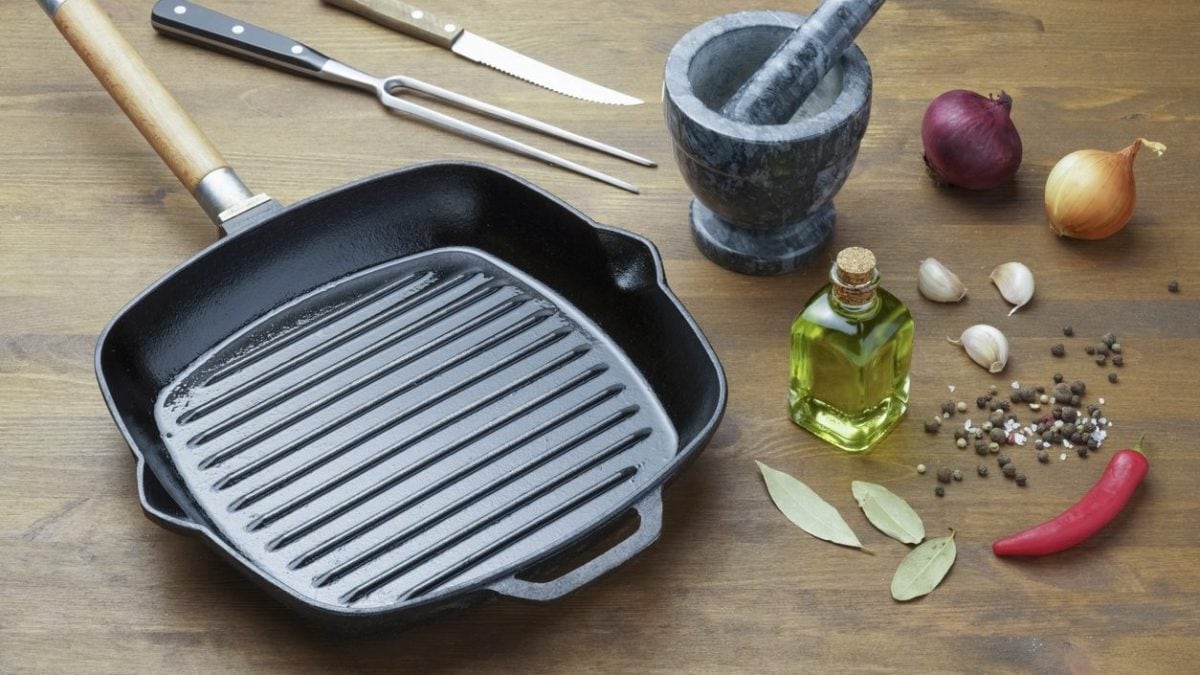
Cooking on the griddlge is one of the most popular cooking methods, and also one of the healthiest: it doesn't require the addition of fatty seasonings, instead taking full advantage of the ingredients already present in the food being cooked. But as simple as it may seem, griddling requires a few small tricks and adjustments to ensure perfect results. And it's a good idea to learn them, because you can cook absolutely anything on the griddle, from meat—the most popular food—to fish, but also vegetables and cheeses.
What is Griddle Cooking?
Griddle cooking is a particular way of cooking food, using a cast iron plate (other materials also exist, but cast iron is the most suitable) instead of a traditional pan, which is heated on the stove.
It's a cooking method inspired by the past, by old-fashioned kitchens that involved cooking directly on a compact, hot surface, and is completely different from char-grilling. With a griddle, food cooks by conduction, with the plate placed between the food and the flame, preventing them from directly touching each other.

Tips and Tricks for Perfect Griddle Cooking
Here are a series of rules and tips to follow for perfect griddle cooking:
- The main secret to perfect griddle cooking is the temperature, which must be very high. Never place food on a cold griddle, as this will result in uneven cooking: instead, turn the griddle on the stove before cooking and let it heat until it is boiling.
- How do you know if the griddle is at the right temperature? Just pour a few drops of water on it: if it evaporates, it's heated to the right temperature. At this point, you can place the food you want to cook on the griddle, but be careful not to let it get too cold. If you're using frozen foods, make sure they're brought to room temperature before cooking.
- One of the biggest risks when cooking on a griddle is food sticking. To avoid this, you can lightly brush the surface of the meat with a tiny amount of oil, perhaps using a pastry brush to control the amount. Some chefs also use coarse salt on the griddle to prevent food from sticking and to flavor the food as it cooks. This trick is especially useful when cooking fish, for example, as a layer of salt will make it even tastier.
What Can You Cook on a Griddle?
Meat is certainly the most popular food for cooking on the griddle, but it's not the only food you can use this technique with. Grilled fish is also delicious, but in general, you can griddle anything you would grill on a barbecue, from seafood like shellfish to potatoes, from vegetables to cheeses.

Every food requires some small care: vegetables, for example, to obtain the perfect consistency, must be cut into slices thick enough so that they do not completely consume during cooking.
As for cheeses, however, it is better to prefer hard, semi-hard and stringy ones: these are the ones that best form a crunchy internal crust while remaining soft and stringy on the inside, such as scamorza and caciocavallo.
Grilled Meat: How To Cook It So It Doesn't Stick
Meat deserves a special mention, the true queen of grilling. Whether it's burgers, sausages, chicken breasts, or steaks, the precautions are the same.
First, the meat must be thoroughly dried, free of any blood on the surface, and at room temperature. To prevent sticking, the griddle pan must be heated thoroughly (the ideal temperature is around 445°F/230°C), and if you're cooking meat with little fat, you should coat it with a drizzle of oil. If the meat is fattier, however, this isn't necessary, as its natural fat will do the work.

It's also important not to poke or pierce the meat during cooking, as this will cause it to lose all its juices and become too tough. So be careful when turning it; use tongs and don't do it too often; a couple of times is enough. Finally, salt the meat only at the end of cooking, directly on the plate.
All The Differences Between Griddle Cooking and Grilling
Be careful not to confuse griddle cooking with grilling: even if they might seem similar at first glance, they are actually two completely different methods.
The grill, in fact, was designed to cook food directly with the heat of the embers, and therefore the food cooks through direct contact with the flame, without any filters. The griddle, on the other hand, cooks by conduction, interposing itself between the food and the flame so that it does not touch it directly.
This results in significantly different cooking results: grilled food has a smokier flavor and uneven cooking, as the temperatures affecting the food are difficult to control. A griddle, on the other hand, allows for even heat distribution, resulting in a more evenly cooked food, generally more tender and with a juicier flavor.
;Resize,width=767;)
